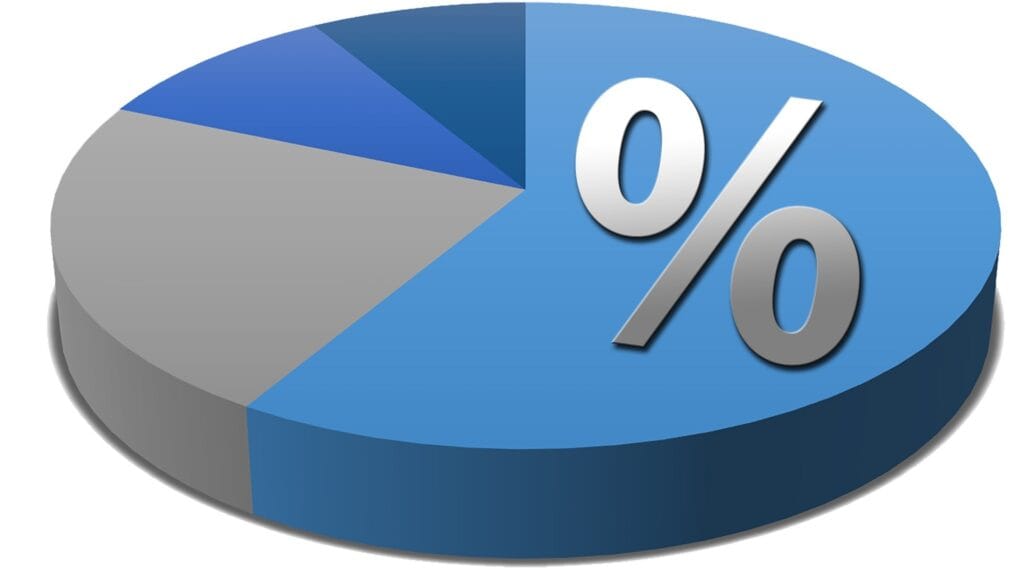Small and Medium Enterprises (SMEs) are the backbone of the Indian economy. They contribute to over 45% of the country’s industrial output, generate employment opportunities, and play a crucial role in the overall development of the nation. However, lack of access to funds has always been a significant challenge for small business owners.
To support the growth and development of these small businesses, the Indian government has launched several initiatives, and one such scheme is the SBI Mudra Loan. The scheme aims to provide financial assistance to small business owners, traders, and individuals who are engaged in manufacturing, trading, and service sectors.
SBI Mudra Loan is a popular loan scheme offered by State Bank of India (SBI) that provides financial support to small businesses. The loan is available under three categories, Shishu, Kishore, and Tarun, based on the amount of funds required for the business. The loan comes with flexible repayment options and affordable interest rates, making it an attractive option for small business owners.
You Want to Start Your Dropshopping Business Without Investment !
Best Option For You — Click Me
In this blog, we will discuss everything you need to know about SBI Mudra Loan. We will cover the eligibility criteria, types of loans available, application process, interest rates, repayment options, collateral requirements, benefits, and comparison with other loan options. So, if you are a small business owner looking for financial support, this blog will provide you with all the information you need to apply for SBI Mudra Loan.
Eligibility Criteria
The eligibility criteria for SBI Mudra Loan is an essential aspect that small business owners must understand before applying for the loan. To be eligible for the loan, the borrower must meet certain criteria set by the government and the bank. The eligibility criteria for SBI Mudra Loan are as follows:
- Business Entity: The borrower must be a small business owner or entrepreneur engaged in manufacturing, trading, or services sectors. The loan is also available for individuals who are self-employed or working in the agricultural sector.
- Age Limit: The borrower must be at least 18 years old and should not exceed the age of 65 at the time of loan maturity.
- Loan Amount: The loan amount is divided into three categories- Shishu, Kishore, and Tarun, based on the business requirements. The borrower must specify the loan amount and category while applying for the loan.
- Credit Score: The borrower’s credit score and credit history are crucial factors that affect loan approval. SBI usually looks for a minimum credit score of 650 or above to approve the loan application.
- Business Experience: The borrower must have a minimum of three years of experience in the same business or related field to be eligible for the loan.
- Required Documents: The borrower must provide essential documents like Aadhar card, PAN card, business registration certificate, and financial statements to verify the eligibility criteria.
- Loan Repayment Capability: The borrower must prove their loan repayment capability by submitting business financial statements like profit and loss statements, balance sheets, and bank statements.
In conclusion, meeting the eligibility criteria is the first step towards availing the SBI Mudra Loan. By satisfying the eligibility criteria, the borrower can increase the chances of getting the loan approved and can enjoy the benefits of the scheme. Therefore, small business owners must carefully read and understand the eligibility criteria before applying for the loan.
Types of SBI Mudra Loans
SBI Mudra Loan is a credit scheme designed to provide financial assistance to small and medium enterprises (SMEs) in India. The loan is available under three categories- Shishu, Kishore, and Tarun, based on the amount of funds required for the business. Here is a detailed explanation of each category:
- Shishu: Shishu is the first category of SBI Mudra Loan and is designed for small business owners who need a small amount of money to start their business. Under this category, the loan amount can range from Rs. 50,000 to Rs. 1,50,000. This category is suitable for small businesses that are in the initial stage and require seed capital to get started.
- Kishore: Kishore is the second category of SBI Mudra Loan and is designed for small business owners who need a higher loan amount to expand their business. Under this category, the loan amount can range from Rs. 1,50,001 to Rs. 5,00,000. This category is suitable for small businesses that have been operating for some time and have established a market presence but need more funds to grow.
- Tarun: Tarun is the third category of SBI Mudra Loan and is designed for established businesses that need a higher loan amount to expand their operations significantly. Under this category, the loan amount can range from Rs. 5,00,001 to Rs. 10,00,000. This category is suitable for small businesses that have a proven track record and require funds to scale up their operations.
It’s worth noting that the loan tenure for all three categories can be up to five years, and the interest rates are generally affordable, making SBI Mudra Loan an attractive option for small business owners.
Application Process
The application process for SBI Mudra Loan is simple and straightforward. Small business owners can apply for the loan through both online and offline modes. Here is a step-by-step guide to the application process:

- Identify the Loan Category: The first step is to identify the loan category that suits your business needs- Shishu, Kishore, or Tarun.
- Prepare the Documents: To apply for the loan, you will need to prepare the necessary documents, including business registration documents, PAN card, Aadhar card, and bank statements.
- Approach the Bank: Once you have all the required documents, you can approach your nearest SBI branch or visit their official website to initiate the application process.
- Fill the Application Form: You will be required to fill the SBI Mudra Loan application form, providing details about your business, the loan amount required, and other essential information.
- Submit the Application: Once you have completed the application form, you can submit it along with the required documents to the bank. The bank will then review your application and verify the documents.
- Loan Approval: If your application meets the eligibility criteria and all the documents are in order, the bank will approve your loan application, and the loan amount will be disbursed to your account.
Interest Rates
Interest rates are a crucial factor to consider when applying for any loan, and the same applies to SBI Mudra Loan. The interest rates for the loan vary depending on the loan category and the borrower’s credit profile. Here is a detailed explanation of the interest rates for SBI Mudra Loan:

- Shishu: The interest rates for Shishu loans, which are designed for small business owners who need a small amount of money to start their business, can range from 9.75% to 11.5%.
- Kishore: The interest rates for Kishore loans, which are designed for small business owners who need a higher loan amount to expand their business, can range from 10.25% to 12.25%.
- Tarun: The interest rates for Tarun loans, which are designed for established businesses that need a higher loan amount to expand their operations significantly, can range from 10.75% to 12.75%.
To improve their chances of getting a loan at a lower interest rate, small business owners must ensure they have a good credit score and a healthy financial track record. They can also approach multiple banks and compare the interest rates and other loan terms to choose the most suitable option.
Repayment Options
SBI Mudra Loan offers flexible repayment options to small business owners, making it easier for them to repay the loan amount without affecting their business operations. Here are the repayment options available for SBI Mudra Loan:
- EMI-Based Repayment: This is the most common repayment option for SBI Mudra Loan. Under this option, the borrower has to repay the loan amount in Equated Monthly Installments (EMIs). The EMI amount includes both the principal amount and the interest amount and remains fixed throughout the loan tenure.
- Term Loan: In this repayment option, the borrower repays the loan amount in full at the end of the loan tenure. This option is suitable for small business owners who have a lump sum of money to repay the loan at once.
- Overdraft Facility: The overdraft facility is another repayment option offered by SBI Mudra Loan. Under this option, the borrower can withdraw the loan amount as per their requirement and repay it as per their convenience. The interest is charged only on the amount borrowed and not on the entire loan amount.
Small business owners must carefully evaluate their financial situation and choose the most suitable repayment option. They can approach the bank to discuss the repayment options and choose the one that best suits their business operations.
Collateral Requirements
One of the advantages of SBI Mudra Loan is that it is an unsecured loan, which means borrowers do not have to provide any collateral to avail the loan. This makes it easier for small business owners to access credit and start or expand their business without having to pledge any assets as security. However, in certain cases, the bank may ask for collateral depending on the borrower’s credit profile and the loan amount.
Here is a detailed explanation of the collateral requirements for SBI Mudra Loan:
- For loans up to Rs. 10 lakh: No collateral is required for loans up to Rs. 10 lakh under the SBI Mudra Loan scheme. This category of loan is called Shishu, and small business owners can apply for it without pledging any collateral.
- For loans between Rs. 10 lakh and Rs. 20 lakh: If the loan amount is between Rs. 10 lakh and Rs. 20 lakh, the bank may ask for collateral depending on the borrower’s credit profile and the purpose of the loan. This category of loan is called Kishore, and small business owners may have to pledge collateral such as property, fixed deposit, or any other asset.
- For loans above Rs. 20 lakh: For loans above Rs. 20 lakh, the bank may ask for collateral, and this category of loan is called Tarun. The collateral requirement may vary depending on the loan amount, borrower’s credit profile, and the purpose of the loan.
SBI Mudra Loan is an unsecured loan, and borrowers do not have to provide any collateral to avail the loan. However, in certain cases, the bank may ask for collateral depending on the loan amount and the borrower’s credit profile. Small business owners must evaluate their financial situation and choose the loan category that best suits their needs. By understanding the collateral requirements and other loan terms, small business owners can make an informed decision and take advantage of this beneficial credit scheme.
Benefits of SBI Mudra Loan
SBI Mudra Loan is a credit scheme designed to provide financial assistance to small businesses in India. The scheme offers several benefits to entrepreneurs and small business owners looking to start or expand their business. Here are some of the significant benefits of SBI Mudra Loan:
- Easy and hassle-free application process: SBI Mudra Loan application process is simple and hassle-free. Small business owners can apply for the loan online or offline and get the loan sanctioned quickly if they meet the eligibility criteria.
- No collateral requirement: As discussed earlier, SBI Mudra Loan is an unsecured loan, and borrowers do not have to provide any collateral to avail the loan. This makes it easier for small business owners to access credit and start or expand their business without having to pledge any assets as security.
- Lower interest rates: The interest rates for SBI Mudra Loan are relatively lower than the interest rates for other loans, making it an affordable option for small business owners. Additionally, the government provides interest subsidies to eligible borrowers, further reducing the cost of borrowing.
- Flexible repayment options: SBI Mudra Loan offers flexible repayment options to borrowers. The repayment tenure can extend up to 5 years, and borrowers can choose a repayment schedule that best suits their business cash flow.
- Support for diverse sectors: SBI Mudra Loan supports a wide range of sectors, including manufacturing, service, and trading. This makes it an ideal credit option for small business owners operating in various industries.
- Boosts economic growth: By providing financial assistance to small businesses, SBI Mudra Loan contributes to the growth of the economy by creating jobs and generating income for the business owners. This, in turn, promotes economic development and enhances the standard of living.
In conclusion, SBI Mudra Loan offers several benefits to small business owners in India. From easy and hassle-free application process to lower interest rates and flexible repayment options, the scheme provides financial assistance to entrepreneurs looking to start or expand their business. Small business owners must evaluate their financial situation and choose the loan category that best suits their needs. By taking advantage of the benefits of SBI Mudra Loan, entrepreneurs can achieve their business goals and contribute to the growth of the economy.
Comparison with Other Loans
When it comes to financing your small business, there are several options available in the market. While SBI Mudra Loan is one of the most popular credit schemes for small businesses, it’s important to understand how it compares to other loans. Here’s a comparison of SBI Mudra Loan with other credit options:
- SBI Mudra Loan vs. Personal Loan: Personal loans are unsecured loans that individuals can avail of for personal expenses, including starting a small business. While personal loans are easy to avail of, they come with a higher interest rate compared to SBI Mudra Loan. Moreover, personal loans may not have as much flexibility in repayment options.
- SBI Mudra Loan vs. Business Loan: Business loans are secured or unsecured loans designed to provide funding to businesses for various purposes. While business loans offer a higher loan amount, they come with stringent eligibility criteria and collateral requirements. In contrast, SBI Mudra Loan is an unsecured loan and offers more flexibility in terms of eligibility criteria and repayment options.
- SBI Mudra Loan vs. Credit Card: Credit cards are a convenient source of funding for small businesses, especially for short-term expenses. However, they come with high-interest rates, and the credit limit may not be sufficient for larger expenses. In contrast, SBI Mudra Loan offers a more substantial loan amount at lower interest rates, making it a better option for long-term business needs.
- SBI Mudra Loan vs. Microfinance Loans: Microfinance loans are designed for low-income individuals who do not have access to traditional banking services. While microfinance loans have a lower loan amount, they come with higher interest rates and stricter repayment terms. In contrast, SBI Mudra Loan offers a higher loan amount and more flexible repayment options.
In conclusion, SBI Mudra Loan offers a competitive credit option for small businesses compared to other loans. While other loans may have their advantages, SBI Mudra Loan provides a balance between ease of access, lower interest rates, and flexible repayment options. Small business owners must evaluate their financial situation and choose the loan category that best suits their needs. By comparing different loan options, entrepreneurs can make an informed decision and choose the credit option that provides the most benefits for their business.
Frequently Asked Questions:
What is SBI Mudra Loan?
SBI Mudra Loan is a scheme initiated by the Indian government and implemented by SBI (State Bank of India) to provide credit to small businesses in India. The loan aims to support small enterprises and start-ups that require financial assistance for their business operations.
Who is eligible for SBI Mudra Loan?
Small businesses, including sole proprietors, partnerships, private limited companies, and self-help groups, are eligible for SBI Mudra Loan. The eligibility criteria depend on the category of loan and the nature of the business.
What are the types of SBI Mudra Loans?
SBI Mudra Loan is divided into three categories: Shishu, Kishore, and Tarun. Shishu is for start-ups, while Kishore and Tarun cater to small and medium enterprises (SMEs).
What is the maximum loan amount for SBI Mudra Loan?
The maximum loan amount for SBI Mudra Loan is up to Rs. 10 lakh under the Tarun category, up to Rs. 5 lakh under the Kishore category, and up to Rs. 50,000 under the Shishu category.
Is collateral required for SBI Mudra Loan?
SBI Mudra Loan is an unsecured loan, and hence, no collateral is required for loans up to Rs. 10 lakh.
What is the interest rate for SBI Mudra Loan?
The interest rate for SBI Mudra Loan depends on the loan amount, category, and repayment tenure. The interest rate is generally lower compared to other loans for small businesses.
What are the documents required for SBI Mudra Loan?
The documents required for SBI Mudra Loan include identity proof, address proof, business proof, income tax returns, and bank statements.
What is the repayment period for SBI Mudra Loan?
The repayment period for SBI Mudra Loan ranges from 3 to 5 years, depending on the category of loan.
Case Studies
- Mumbai Express Bakery – Shishu Category Mumbai Express Bakery is a start-up based in Mumbai that produces a variety of cakes and baked goods. The owner of the bakery wanted to expand her business and introduce new products to attract more customers. However, she did not have the funds required for the expansion. She availed an SBI Mudra Loan under the Shishu category and received Rs. 50,000. With this amount, she purchased new baking equipment, raw materials, and marketing materials. As a result, the bakery was able to increase production and sales, leading to a 30% increase in revenue within six months.
- KPR Mills – Kishore Category KPR Mills is a small clothing manufacturer based in Jaipur that designs and produces traditional Indian clothing. The business owner wanted to upgrade the manufacturing facility and purchase new machinery to improve the production process. He applied for an SBI Mudra Loan under the Kishore category and received Rs. 3 lakhs. With this amount, he purchased new machinery and hired additional workers to increase production capacity. As a result, the business was able to fulfill orders faster and more efficiently, leading to a 40% increase in revenue within one year.
- Roy Automobiles – Tarun Category Roy Automobiles is a medium-sized automobile repair shop based in Bangalore that offers repair and maintenance services for various types of vehicles. The owner wanted to expand the business and open a new branch in a nearby city to reach more customers. He applied for an SBI Mudra Loan under the Tarun category and received Rs. 8 lakhs. With this amount, he leased a new property, purchased new equipment, and hired additional workers. As a result, the business was able to increase its customer base and revenue by 50% within two years.
Yogurt vs Curd: Why Curd is a Must-Have Superfoods for Vegetarians — Click Me




